-

Geological Survey of Canada
The Geological Survey of Canada publishes George Dawson’s geological map of the Canadian Rockies. The map covers the Canadian Rockies from the border with the United States to the Red Deer Valley in central Alberta and includes Turner Valley and Bow Valley and was an important resource for natural resource exploration.
Source: Natural Resources Canada, used under the Government of Canada’s Open Government
License: http://open.canada.ca/en/open-government-licence-canada
-
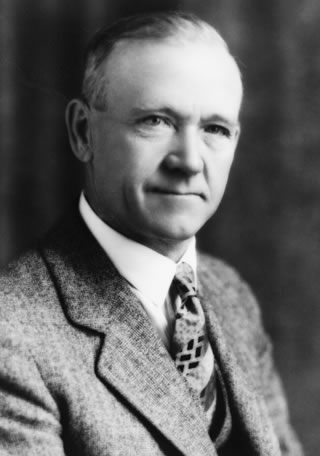
Herron Acquires Land and Drilling Rights
William Stewart Herron, shown here ca. 1930, noticed gas seepages along the Sheep River and acquired land and drilling rights for the area. He partnered with Archibald W. Dingman and a group of Calgary-area investors to form Calgary Petroleum Products and began drilling in Turner Valley in 1913.
Source: Glenbow Archives, NA-4607-1
-

Discovery!
Calgary Petroleum Products discovers wet gas at the Dingman No. 1 well on the Sheep River in Turner Valley on May 14, 1914. Calgary Petroleum Products begins installing equipment to process the raw petroleum.
Source: Glenbow Archives, NA-2335-4
-
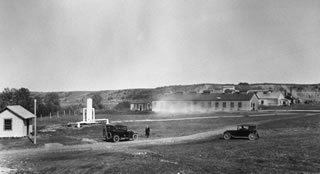
Royalite Takes Over
A fire and explosion in October 1920 severely damage the Calgary Petroleum Products plant at Turner Valley. Unable to continue operations, the company is taken over by Imperial Oil in 1921. Imperial Oil forms a subsidiary company called Royalite to manage the plant and wells in the valley. New absorption and compression plants are built as well as a pipeline to Okotoks, which, on December 31, feeds gas into the Canadian Western Natural Gas line to Calgary.
Source: Glenbow Archives, NA-711-85
-
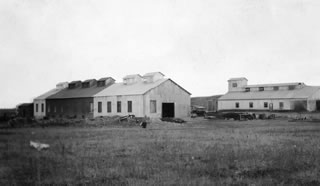
Consumer Demand
To meet growing consumer demand for natural gas in Calgary, Royalite doubles the size of its compression plant at the Turner Valley gas plant.
Source: Glenbow Archives, IP-6e-3-57
-
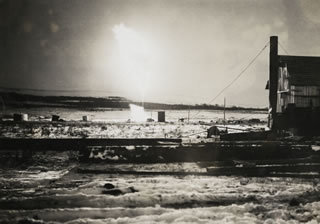
Sour Gas
Royalite No. 4 in Turner Valley, a sour gas well, results in a major blowout that destroys the derrick. The fire burns for three weeks until a team of experts from Oklahoma uses dynamite and steam to extinguish the flames.
Source: Glenbow Archives, IP-6e-4-18
-
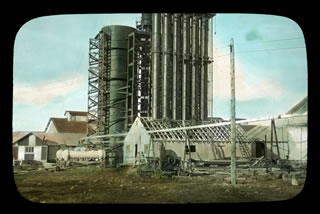
Sweetening
Royalite builds a new scrubbing plant using the Seaboard soda ash process to remove toxic hydrogen sulfide and “sweeten” the sour gas. This signals the beginning of a major expansion of the Turner Valley gas plant.
Source: Glenbow Archives, S-17-110
-

Air Service
In August 1929, the Rutledge Air begins a daily route between Turner Valley and Calgary, making Turner Valley one of the first communities in Alberta to be served by scheduled flights. Flights to Edmonton commence soon after.
Source: Glenbow Archives, ND-3-4871b
-
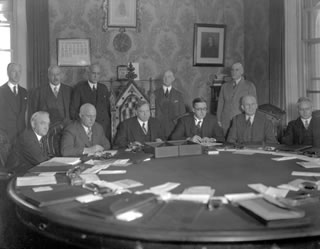
Provincial Control
The Government of Canada transfers control of natural resources to the Government of Alberta The agreement is signed on December 14, 1929 by Prime Minister Mackenzie King (seated centre) and John Brownlee, premier of Alberta to his left. The required legislation is passed in 1930.
Source: Provincial Archives of Alberta, A10924
-
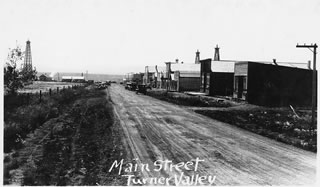
Incorporation
Turner Valley and Black Diamond incorporate as villages. Hit hard by the Great Depression, both villages would be bankrupt by the end of 1931.
Source: Glenbow Archives, NA-67-51
-
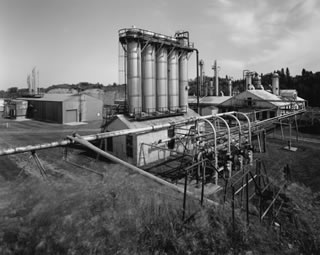
Expansion
Royalite adds new facilities and expands production capability.
Source: Alberta Culture and Tourism
-
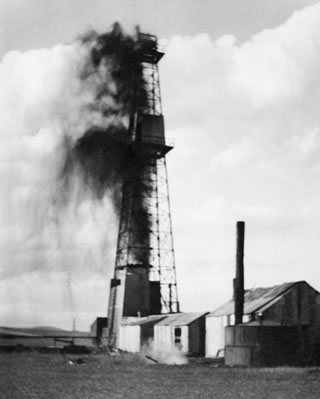
Turner Valley Royalties No. 1
Turner Valley Royalties strikes oil at its No. 1 well near Longview. Although not directly related to the gas plant, this discovery sparks an economic recovery and leads to the growth of communities in the region.
Source: Glenbow Archives, NA-2335-2
-

Conservation
After years of concerns about flaring waste gas, the Government of Alberta enacts the Oil and Gas Resources Conservation Act. This Act results in the creation of the Petroleum and Natural Gas Conservation Board, which is endowed with the authority to regulate all gas and oil operations and to enforce better conservation measures.
Source: The Oil and Gas Conservation Act, SA 1938 (Second Session), c. 1
-

Wartime Supply
During the Second World War, the Government of Canada establishes the Department of Munitions and Supply under the control of Minister C. D. Howe. Howe and his ministry, which oversees all aspects of Canada’s wartime production, deem oil to be a strategic wartime commodity.
Source: Library and Archives Canada, C-019382
-

Wartime Demand
Royalite installs a Girbotol natural gas sweetener, which allows for the increased production of natural gas. This helps meet the increased demand for natural gas during the Second World War, particularly for the Allied War Supplies Corporation facilities south of Calgary.
Source: Glenbow Archives, IP-6d-4-7b
-
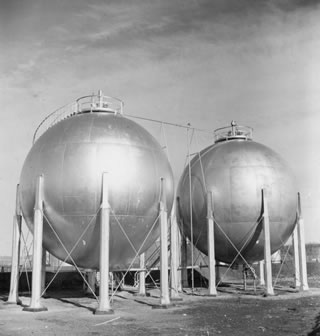
High Octane
Two Horton Spheres are installed at the Turner Valley plant to store isobutane, a necessary ingredient in the manufacture of high-octane aviation fuel. The spherical shape of these tanks is best for storing high-pressure, volatile petroleum products like isobutane.
Source: Glenbow Archives, IP-14a-1472
-
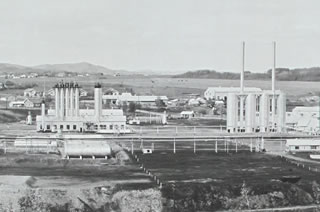
Madison Natural Gas
Royalite creates a subsidiary, Madison Natural Gas, to gather and process gas from wells in the Turner Valley region.
Source: Provincial Archives of Alberta, P4723b (Detail)
-

Propane
In July 1952, Royalite buys the Western Propane plant and relocates it to the Turner Valley plant site. It makes propane from the main plant’s flare gas.
Source: Provincial Archives of Alberta, P2902
-
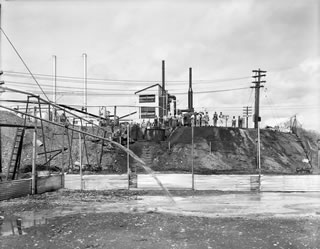
Sulfur Extraction
Madison Natural Gas establishes a sulfur extraction plant at its Turner Valley operation. This makes Canada the largest worldwide exporter of elemental sulfur.
Source: Provincial Archives of Alberta P2990
-
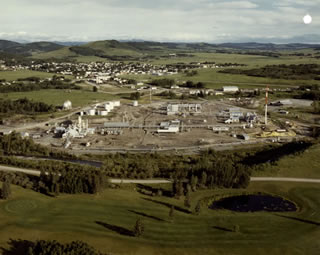
Decommission
In 1985, following years of declining production and rising costs for maintenance and upgrading, the Turner Valley gas plant is deemed to be no longer economically viable and is decommissioned.
Source: Alberta Culture and Tourism
-
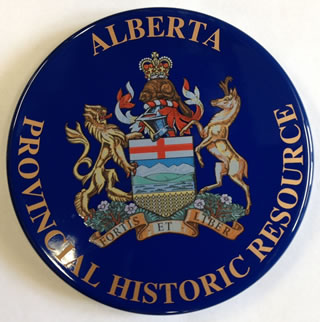
Provincial Designation
The Government of Alberta acquires the Turner Valley gas plant in 1988. The site is determined to be provincially significant for its association with Alberta’s oil and gas history, and it is designated a Provincial Historic Resource in 1989.
Source: Alberta Culture and Tourism
-
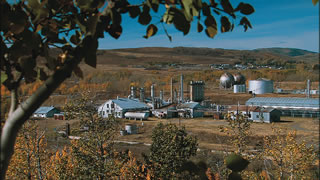
National Designation
The Turner Valley gas plant is determined to be significant for its role in the development of Canada’s oil and gas industry and is declared to be a National Historic Site of Canada on November 24, 1995.
Source: Alberta Culture and Tourism
-

100 Year Anniversary
The centennial of the discovery of the Turner Valley oilfield is observed on May 12, 2014, with a public event at the site.
Source: Alberta Culture and Tourism